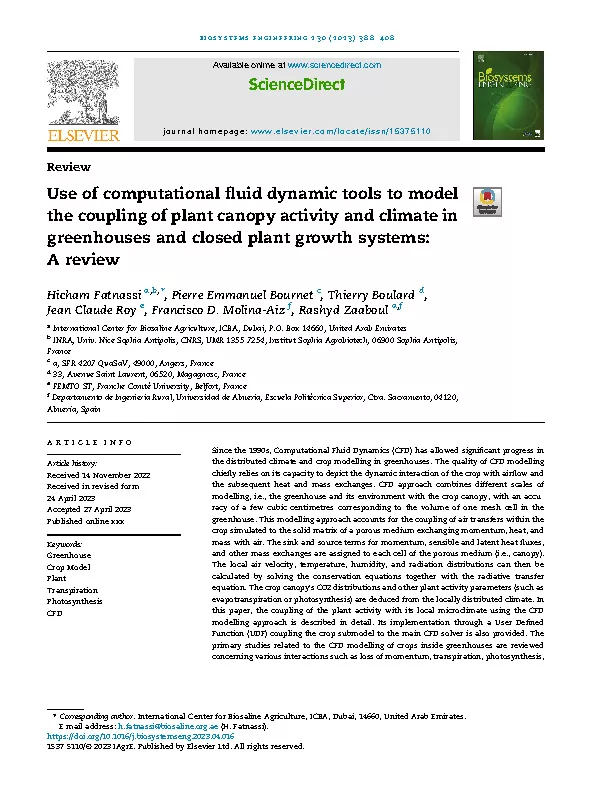Use of computational fluid dynamic tools to model the coupling of plant canopy activity and climate in greenhouses and closed plant growth systems: A review
Since the 1990s, Computational Fluid Dynamics (CFD) has allowed significant progress in the distributed climate and crop modelling in greenhouses. The quality of CFD modelling chiefly relies on its capacity to depict the dynamic interaction of the crop with airflow and the subsequent heat and mass exchanges. CFD approach combines different scales of modelling, i.e., the greenhouse and its environment with the crop canopy, with an accuracy of a few cubic centimetres corresponding to the volume of one mesh cell in the greenhouse. This modelling approach accounts for the coupling of air transfers within the crop simulated to the solid matrix of a porous medium exchanging momentum, heat, and mass with air. The sink and source terms for momentum, sensible and latent heat fluxes, and other mass exchanges are assigned to each cell of the porous medium (i.e., canopy). The local air velocity, temperature, humidity, and radiation distributions can then be calculated by solving the conservation equations together with the radiative transfer equation. The crop canopy's CO2 distributions and other plant activity parameters (such as evapotranspiration or photosynthesis) are deduced from the locally distributed climate. In this paper, the coupling of the plant activity with its local microclimate using the CFD modelling approach is described in detail. Its implementation through a User Defined Function (UDF) coupling the crop submodel to the main CFD solver is also provided. The primary studies related to the CFD modelling of crops inside greenhouses are reviewed concerning various interactions such as loss of momentum, transpiration, photosynthesis, and the characteristics of the field experiments used for validations. From this analysis, future trends of CFD developments applied to crop activity are also presented.
Year
2023
Publication Source
Biosystems Engineering
Publication type
Scientific Paper
Volume/Chapter/Issue
230
Page Number
388-408











